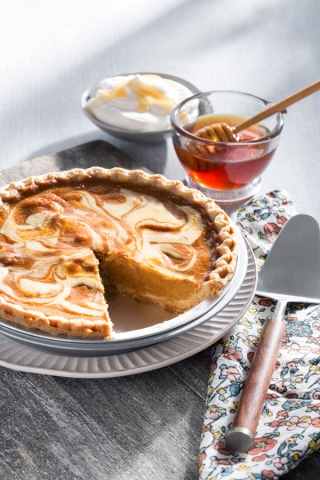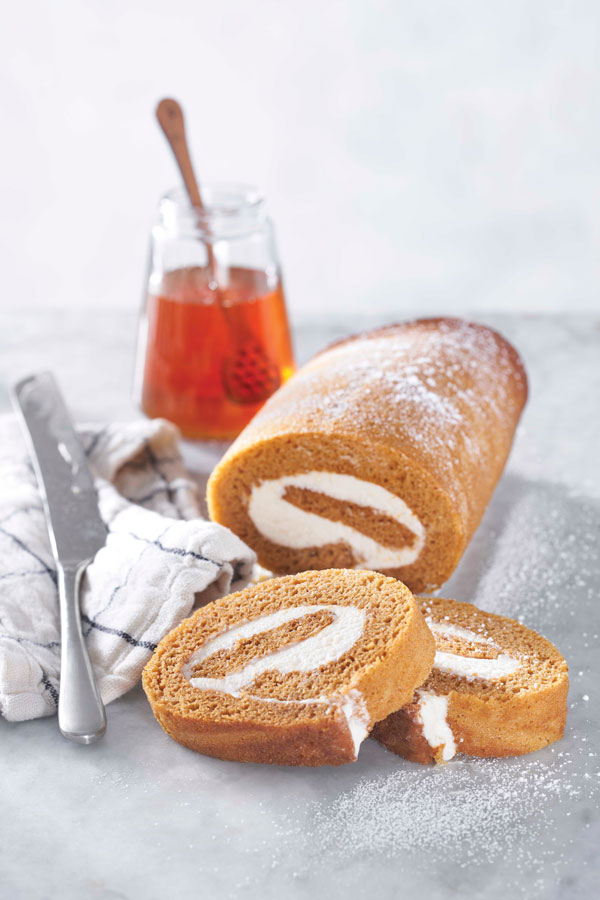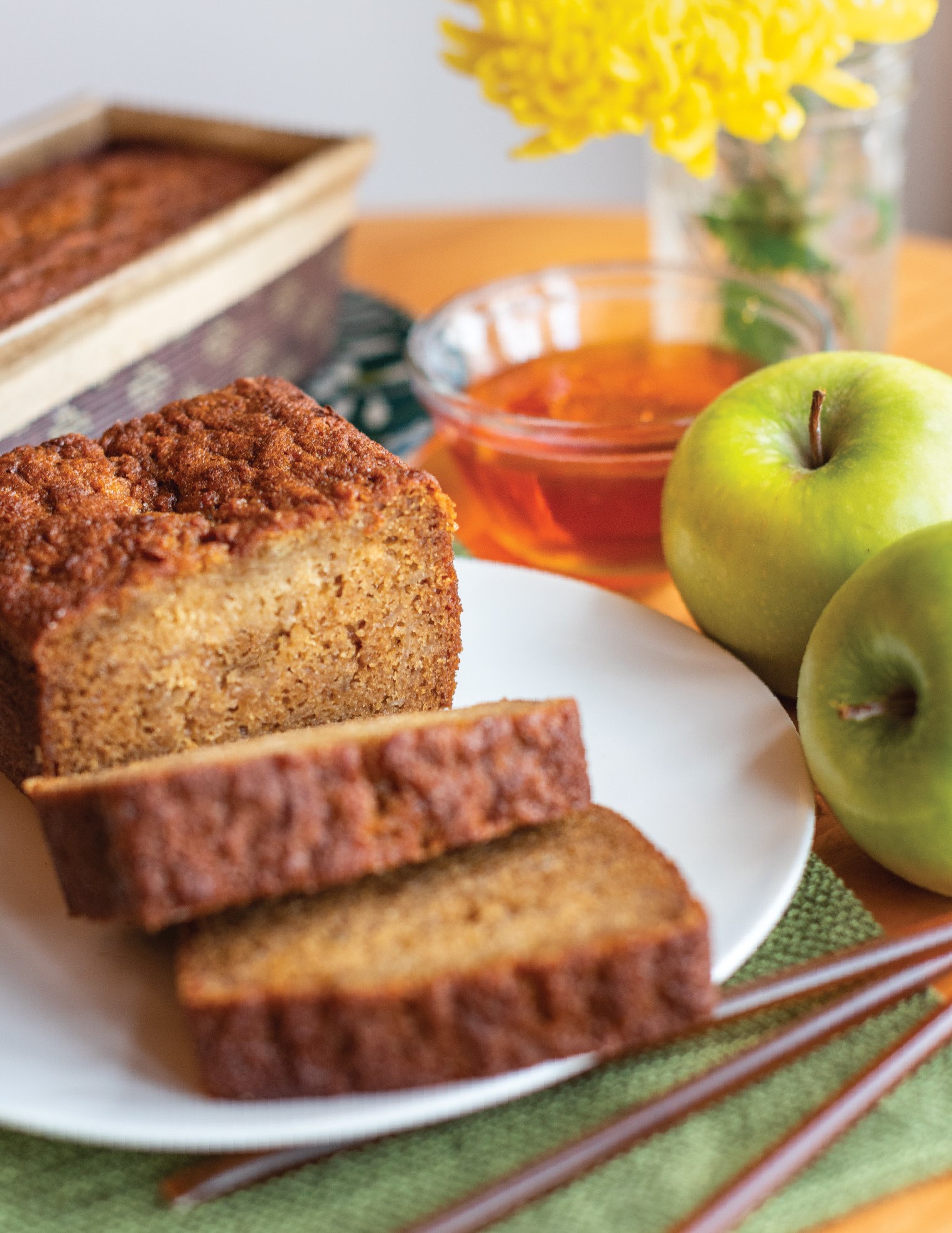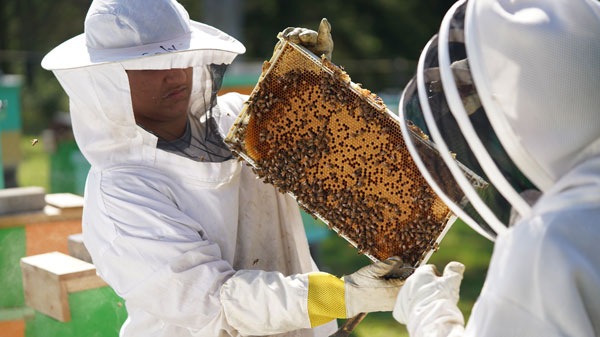
Honey in Baking and Sustainability
06 October 2021The sweetener is a byproduct of honeybees contributing to pollinating one-third of the world’s food supply. A sweet win for baking and sustainability.
By the National Honey Board
Feedback & comments: This email address is being protected from spambots. You need JavaScript enabled to view it.
 Honey is a baker’s best friend. It contributes to exceptional flavor, performs essential functional roles, and is marketable. What other ingredient provides baking and snack foods with such a unique point of distinction? Honey is pure inspiration.
Honey is a baker’s best friend. It contributes to exceptional flavor, performs essential functional roles, and is marketable. What other ingredient provides baking and snack foods with such a unique point of distinction? Honey is pure inspiration.
But there is more to honey than meets the eye. There are more than 300 varietals of honey in the United States, each with a unique flavor and color profile.
The best part is that honey is not created or manufactured in a facility. It occurs naturally in one of the world’s most efficient factories: the beehive. Bees may travel as far as 55,000 miles and visit more than two million flowers to gather enough nectar to make just one pound of honey. All the bees’ hard work is manifested in a special ingredient ideal for use in baking and snack foods.
Substitution
Honey is slightly sweeter than sugar and instructors can use less to achieve the same amount of sweetness. When substituting honey for granulated sugar in recipes, begin by substituting honey for up to half of the sugar called for in the recipe. For baked goods:
- reduce the liquid in the recipe by 1/4 cup for each cup of honey used
- add about 1/2 teaspoon baking soda for each cup of honey used
- reduce the oven temperature by 25 degrees to prevent over-browning
Culinary baking and pastry arts instructors may know October is National Cookie Month. To celebrate the marker and understand honey as a substitution in baking, instructors may be interested in incorporating cookie recipes featuring honey as the sweetener. Click here for more information on cookies and honey.
Bread and honey
Bread manufacturing has shifted. What once was an all-white bread industry has diversified with new product offerings, ranging from multi-grain to whole wheat.
That’s where honey comes in. Even though nutritional guidelines suggest consumers should be eating more whole grains, many don’t like the whole grain’s taste. Honey rounds out the flavor of whole grains, making honey whole-wheat loaves a top choice.
And it’s not just whole grains—honey pairs well with almost any bread, whether educators are looking to mask the flavor of a vitamin premix or just looking to create that perfect sweetness.
Honey also plays countless functional roles in bread, from inhibiting mold to naturally extending shelf life to enhancing color and mouthfeel. Honey’s low pH and moisture content (17 percent) means bakery foods stay moist longer.
Sweet goods and honey
It’s not always the calories and fat content of sweet goods that scare away consumers. It’s the extensive ingredient listings that often contain artificial flavors, preservatives and colors. According to data, today’s consumers don’t have a problem indulging their sweet tooth if the indulgence comes from an all-natural ingredient with a positive perception.
Honey is a natural sweetener made by bees in a beehive. Honey is functional with both flavor and functional roles such as attaining exceptional mouthfeel, color, aroma and flavor. And, finally honey is timeless.
Students and educators alike can learn from professional bakers about how to incorporate honey into baking breads and pastries by watching this collection of videos from the National Honey Board.
 Honey’s role in sustainability
Honey’s role in sustainability
Did you know that more than one-third of the world’s food supply wouldn’t exist if it wasn’t for the work of beekeepers, honeybees and other pollinators? The coexistence of beekeepers and all pollinators -- including native bees, birds, butterflies, and honeybees -- is what sustains ecosystems -- and humanity.
“Sustainability is really important in the honey industry,” said Zac Browning, beekeeper for Brownings Honey. “When you are talking about a third of our diet…what could be bigger than that?”
Click here to read a blog for more information about the impact of managed pollination or moving beehives around the United States from crop to crop to pollinate food supplies.
Click here to read a Gold Medal Classroom’s Meet the Growers article, “A Beekeepers Sweet Story.”
